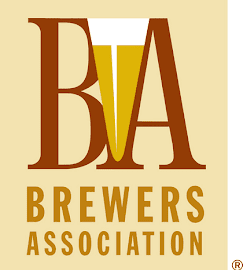Not a list of the dozen best-of-the-best books about beer of 2011, but, rather, my list of a dozen choices, some personal delights, others of unique or deserved merit. Some of the books were published this year, while others are worthy chestnuts.
Between 20 November and the Winter Solstice, I'll reveal my recommendations. On Christmas Day, put your feet up, pour yourself a good beer, and read a good book. Or, better yet, give a friend the gift of a beer and a book. December 22nd may be too late to arrange shipping by Christmas (unless the book is available as an e-book), but it's time sufficient to pay a visit to your local brick and mortar —and book— store.
******************************
And, so ... cue ten lords, a-leaping.
Cool Yule Beer Book for 2011: #10
Evaluating Beer
various authors
Brewers Publications, US: 1998
ISBN: 0937381373
Several years ago, a friend of mine, who had been in the in the business of selling beer and wine for over a quarter of a century, was struck by a moving vehicle. He suffered a fractured skull and spine. Over an 18 month period, he recovered his health and most of his mobility. Other than the pain of physical therapy, what vexed him most, he told me, was his loss of his sense of smell.
Here he was, in the business of beer and wine, and he was unable to taste the very things he was describing to his customers. The few aromas he could sense were inappropriate to the beverages. He knew what Bordeaux wines should taste like; yet, when he sipped them now, they tasted like liquid plastic bandages. He knew that American IPAs were hoppy; when he tasted them now, they smelled like, ahem, fecal matter. But over the course of his recovery — knowing from 25 years years professional experience what things were supposed to taste like— he was able to figuratively re-train his mind to recognize flavors as they should be. He is 99.9% back to normal. A Beautiful Nose, if you will.
Under 'normal' circumstances, I believe most people have good palates, that is, the ability to sense taste and aromas. What they need is the vocabulary to describe those sensations. A book such as Evaluating Beer can help begin that development.
The book is a series of short essays by numerous experts in the fields of beer, brewing, and flavor complied by the Brewers Publications, an arm of the Brewers Association (a lobbying and advocacy organization for U.S. breweries producing fewer than six million barrel of beer annually). As homebrew guru (and BA founder) Charlie Papazian puts it in the first chapter, "beer tasting is a learned skill." The 17 chapters go on to discuss flavor profiles, sensory evaluation, training methods for tasting, sources of flavors, identifying flavors in a real-time brewing environment, etc.
Three chapters were written by instructors at the Siebel Institute of Technology, in Chicago, Illinois Flavor Profiles by Ilse Shelton Origins of Normal and Abnormal Flavor by Ted Konis: '101' classes in the flavors that should or shouldn't be in beer. Ron Siebel's chapter is a how-to on creating taste panels for evaluating beers for quality, rather than for style.
I was fortunate enough to have studied under them in the early 1990s (and still have voluminous notes). Ron Siebel, and his brother Bill, are great-grandsons of the German brewer who founded the school in the 19th century. They have since sold the school.
Two chapter are contributions by food and brewing scientist Morton Meilegard, the lead creator of the famous Beer Flavor Wheel. One of those is a very useful primer on setting up consumer tasting panels.
Charlie Papazian ties it all together and discusses the 50-point scale that is used by the American Homebrewers Association (and the Brewers Association) to judge beers according to style designation.
I recommend Evaluating Beer to anyone who wants to increase their enjoyment of beer, or who wants to sell or make beer —for fun or profit, or both. It's a valuable introductory reference with a useful list of other source materials. Although some chemical and biochemical terms are used, none of the chapters are too technical in scope for a non-scientific layman.
The next step would be to apply the discussed principles while actually tasting beer. More than that, one could take courses on beer flavors offered by various beer schools and educational institutions. One such is the Siebel Institute, which I mentioned earlier [pronounced SEE bull]. Others include the zymurgy department at Cal-Davis and the American Brewers Guild. Online coursework is available.
Another route would be through the Cicerone Certification Program [pronounced SIS sir rone], run by Ray Daniels, as beer server training and accreditation. The syllabus includes the study of beer flavor: 'normal' flavors —and their derivation— and 'off' flavors —what they are, how they occur, and how to prevent them.
Evaluating, while drinking. Tough studies, wouldn't you say?
- For on-line purchasing, I link to the Brewers Association book store, or to the marvelous resource, BeerBooks.com. When not available there, or if published as an ebook, I link to Amazon.com.
- The 12 Books for Christmas 2009: here.






.png)




.png)






